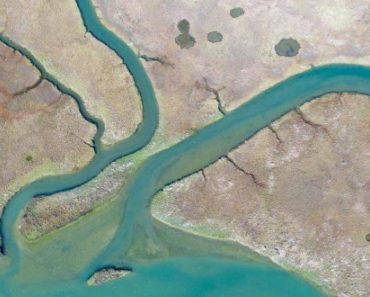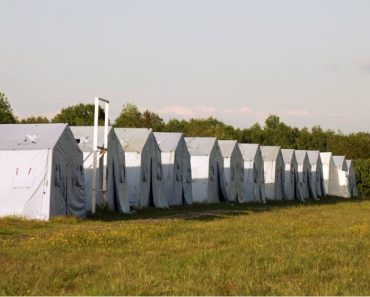With wintertime fully upon us, I’m sure that we’re all content in the knowledge that we’re ready, just in case another Winter Storm Uri comes along. While all those other people will be freezing their whatever off, we’ll be warm and dry in our homes, sitting in front of the fire. But I have to ask, just how ready are we?
Wood fire is the historic means of heating homes, in use pretty much around the world, up until recent times. Although other fuels have been used, it wasn’t really until the industrial revolution that wood lost Its place of primacy as a heat source. Today there are still people who heat with wood, even here in the United States; but they are clearly in the minority.
While the EPA has been busy trying to make it harder and harder to heat with wood, preppers have been busy buying wood burning stoves and preparing to heat our homes with wood, in the event of any disaster, whether a TEOTWAWKI event or just another power outage. But again, I ask, just how ready are we?
Here’s the problem I see. It’s a matter of fuel. Just how much firewood do you have on-hand and how long will that firewood last you? Few of us truly have enough. I have a couple of cords stacked up in my backyard, and I’m sure that is not enough.
People who heat their homes with firewood generally consume between four and six cords of dried hardwood firewood per winter. I’m not talking about pine here; that’s about the worst firewood you can get. I’m talking about something like hickory, oak, or ash. The amount of heat energy stored up in hardwoods is much higher than that of softwoods, making them the better bargain and better for survival. Just look at these heat value numbers:
- Oak – 29
- Hickory – 28
- Apple – 27
- Walnut – 22
- Birch – 21
- Cherry – 21
- Ash – 20
- Elm – 20
- Pine – 17
- Cedar – 13
What that means, in practical terms, is that each oak log will give you nearly twice as much heat as a comparable sized pine log (actually 70% more). Not only that, but those logs burn longer, cutting down the amount of time you have to spend hauling wood in from the woodpile and attending your fire. So, while it is useful to have a little bit of pine or cedar in your woodpile, for starting fires with, the bulk of your woodpile should be something that is going to produce more heat.
Building Your Woodpile on the Cheap
It probably sounds to you like I’ve juts piled another cost on your prepping. I’m not. Fortunately for us, building a woodpile is something we can do, without having to spend a lot of money. That is, we can do it if we have a chainsaw and either a truck or cargo trailer. I built the four-cord woodpile at my former house, hauling wood in a 4’x 8’ trailer, behind a compact car.
There are plenty of opportunities to cut wood for firewood, rather than having to pay for it. Storms knock down tree limbs or even whole trees. Trees die. People cut down trees and stack the wood by the curb to be picked up. You just need to train yourself to look for these opportunities and be willing to put in a little sweat equity.
Here are my favorite “free wood” options I look for:
- Storm damage – Ride around after any major storm and you’re likely to find people with tree limbs down. If you have your chainsaw in the vehicle, you can offer to take care of their problem right then and there. That way, they won’t call someone else to do it. Trees or branches that fell in the street are free pickings, making you look like a public-minded citizen.
- Offer Services to the City – Speaking of looking like a public-minded citizen, try offering your services at city hall. Municipalities often have trees that need removal, either for new projects or because the tree has died. This doesn’t always work, as some municipalities will want you to have insurance and be bonded to cover accidents; but you won’t know until you ask.
- Construction sites – I only bother to pay attention to large construction sites, as there’s little likelihood that there will be trees to cut down on smaller ones. But a housing development, new office building, factory or shopping center is likely to have several trees that need removal. The bigger problem is going to be telling them that you can’t take them all down.
- Dead trees – I’m always keeping my eyes open for any dead trees I see. To most people, that dead tree is a problem, and depending on where you live, they might see it as an expensive problem to deal with. Offering to take down that tree and remove it from their property will seem like an act of charity. Little do they know that you’re the one receiving the charity.
As a side note on this – I’m a woodworker, as well as a prepper. We went to a Christmas tree farm last December, to cut our own tree. As we were leaving, I spotted a dead oak tree, with a 30” diameter burl on it. I asked the owner of the farm if I could have it, and he said I could, just as long as I cut the tree down (which I would have had to do to get the burl anyway). That burl is probably worth close to $1,000.
If you’re going to cut down trees or clean up branches, remember that there’s more to it than just getting what you want out of the deal. You’ll need to clean up the branchlets and other parts you can’t use, rather than just leaving them sitting there. in most cases, you can just pile them at the curb, but make sure that you can do that, before making that assumption.
What About a SHTF Situation?
While cutting enough wood to take you through a short-term disaster is a problem; it’s nothing compared to the problem which will exist after a TEOTWWKI situation. What I see in the prepping community is the attitude that we’ll all be okay for heat, because we can heat with wood. But once you use up the wood you’ve got stockpiled, where are you going to get more firewood from?
We have to assume that the trees in our neighborhoods will likely be burnt down by others who are less prepared, as they try to keep warm. That probably will extends as far as tearing down condemned buildings to burn the wood in them. That’s all pine, so it won’t be the best firewood anyway; but for those people, it will be better than nothing. Still, it leaves us without that option.
Cutting trees for firewood in a post-TEOTWAWKI world is going to be a big problem. We’ll likely go through more than the aforementioned four to six cords of wood, as we’ll also be using it for cooking all year long. That means having to cut, split and haul enough wood to our homes.
Our first problem is finding trees to cut. Where is the closest stand of woods to your home? What kinds of trees are growing there? Are they good hardwood or something less desirable? Are there a lot of deadfalls on the ground or is it pretty clear?
How are you going to cut those trees down and then cut them into manageable sections that you can take home? In olden times, felling trees was a wintertime activity, giving rise to the saying, “He who cuts the wood, warms himself twice.” Cutting the tree down is axe work; but once it’s down, you’ll need a bucking saw to cut it into manageable sections. Further bucking can be done back home, if you prefer, as well as splitting the logs for the fire.
But the biggest problem is going to be transport. How can you possibly move that wood home, if there’s no gasoline for your truck? They used to use horse-drawn wagons and sleds to move wood in olden times; but there are few of us today who have horses or wagons.
I’m afraid to say that I don’t have an answer for this. I’m fortunate in that I live only a few blocks from the nearest stand of what passes for woods around these parts. While the trees aren’t all that grand, at least they aren’t hard to cut down. Being close, I can bring the wood home in a wagon or wheelbarrow, if nothing else. But if I didn’t have that to count on, I don’t know what I’d do.
You need to put some thought into this one. Like other survival activities that would take place far from home (hunting and fishing in particular), transportation will be an issue. What can you use and what sorts of limitations will that put on how much you can bring home? You’re better off finding a solution today, rather than waiting until you need it.








![Survival Medicine Podcast: Hypothermia, Off-Grid Nursing, Pt. 1 [PODCAST] Survival Medicine Podcast: Hypothermia, Off-Grid Nursing, Pt. 1 [PODCAST]](https://survivalcove.com/wp-content/uploads/2021/11/survival-medicine-podcast-banner-370x297.jpg)



















